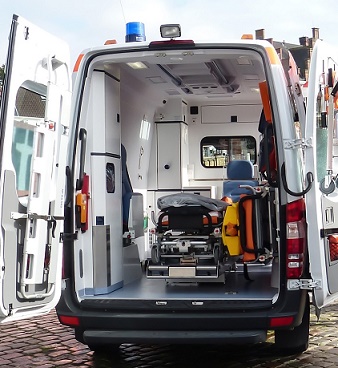What to do when a colleague collapses in the office

What is the right thing to do if a colleague collapses while you are at work?
Knowing how to respond in such a situation presents a crucial element for the quick recovery of the person.
What is a collapse?
Speaking in medical terms, a collapse does not necessarily refer to an unconscious, sudden fall to the ground. It can also be regarded as a range of extraordinary changes in the behaviour and consciousness of a person. Without falling on the ground, a person may suddenly stop talking or become unresponsive, which also presents a dangerous collapse.
What are the most common reasons for a sudden collapse?
Cardiac Arrest
The main symptoms of cardiac arrest are unconsciousness and irregular breathing as well as an inability to detect the pulse of the victim.
Stroke
A person may respond with impairment, such as an inability to move an arm or leg, speak, or understand speech, or in a worse scenario, the person may become completely unresponsive.
Seizure
Seizure presents a loss of consciousness and falling down, followed by a 15 to 20-second period of muscle rigidity, with a period of 1 or 2 minutes of convulsions. After the seizure, the person may slowly respond to verbal and physical stimulation. Breathing resumes normally after the seizure stops.
Hypoglycemia
The person continues to breathe, but may not be responsive to verbal and physical stimulation. Just before losing consciousness, the person may have felt weak or shaky and may have had blurred vision or a headache.
Fainting
The person becomes pale and slowly falls down or loses consciousness for a few seconds due to a reduction of blood flow to the brain. It is widely confirmed that low blood pressure is the most common reason for fainting, which can be caused by standing up too fast from a seated or lying position, fast breathing, prolonged vigorous physical activity, a high dose of blood pressure medications, or becoming extremely emotional or upset.
What to do if a colleague collapses in front of you
1. If something happens to a colleague, you must first check if there is any danger around the workplace, and then give a tough shake on the person’s shoulders while shouting, “Can you hear me?” or “Are you ok?” In the meantime, you must react timely and call emergency medical assistance.
2. If there is no response, the next thing you must do is to put the person’s head back and clear their airway. Very often, this simple action may be enough to normalize their breathing tempo. In order to check the situation, you must come closer to the person and hear or feel if there are signs of breathing, such as if their chest are rising and falling.
3. In unfortunate cases, when the person is not breathing, you must react quickly and call for help or find someone who knows to start cardiopulmonary resuscitation (CPR). If there is nobody around who knows or agrees to perform CPR, you must take the job in your hands, literally. The procedure goes like this: use both hands so that one is on top of the other and push down in the centre of the person’s chest around 5cm with each push.
· With CPR, you make way for the blood to reach their organs, particularly their brain. The pushing also helps to bring fresh air into their lungs. It must be a big push, so it is recommended to get over them and use your body weight, pushing with straight arms.
· Regarding the tempo, you will make the biggest possible impact on the person’s health if you push down twice in a second. It is a very quick and demanding action, and you must keep going until medical help arrives. If there are other colleagues in the room, you can swap with someone because it is likely that you will get tired.
Here’s a visual guide on how to perform an adult resuscitation:
Download and print visual guide
4. If someone can find a defibrillator or AED around, you must be prepared to use it. A defibrillator is designed to be used by anyone, so you must not be afraid. The defibrillator will quickly analyze the heart of the victim, and if necessary, will produce an electric therapeutic dose. The chances of survival of your colleague may directly depend on every second you spend hesitating whether to use the defibrillator or not.
Here’s a visual guide on how use an AED:
Download and print visual guide
If a colleague or another person who is visiting your workplace collapses in front of you or you run into someone unconscious, it is crucial to stay calm, not to panic, and to keep yourself safe. Even though it is clear that the prompt arrival of trained medical help makes a difference between life and death, everyone must understand the importance of providing first aid to the person in need. Every member of the team at the workplace must stay strong and take responsibility if such an unpleasant event happens.
Note: The information contained in this article is for general information purposes only and should not be used as a substitute for first aid and OHS training.
Katrina McKinnon is the Community Outreach Manager for Alsco Australia. Alsco Australia is a leading provider of first aid kits and first aid training in Australia. Alsco offers business courses for OHS compliant and maintain a safe workplace for your people. Katrina can be contacted at katrina.mckinnon@alsco.co. Twitter: https://twitter.com/AlscoGreenRoom


